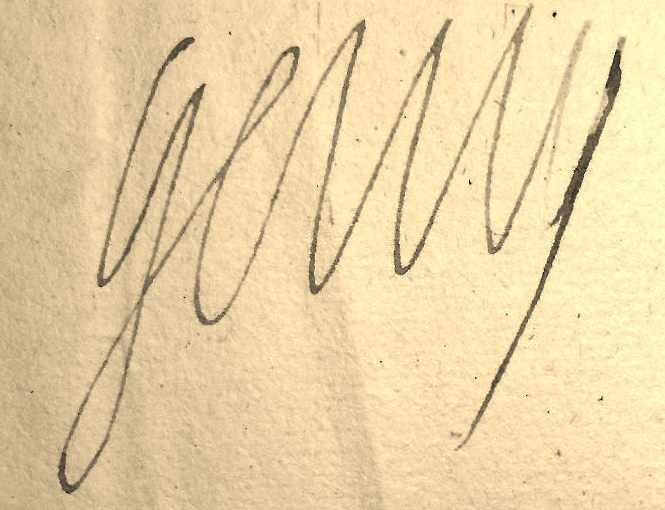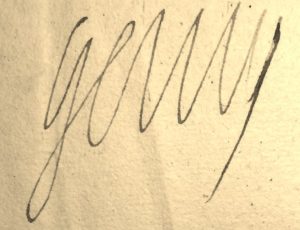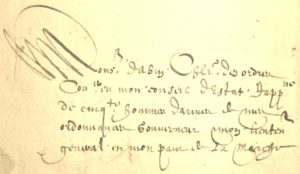Henri IV (1553-1610), King of France. Signed letter, Saint-Denis, 1st August 1593, to Monsieur d’Abin, Knight of Orders, councillor in his council of state and captain of fifty men-at-arms of his ordinances, Governor and Lieutenant General in his country of the March; countersigned by Pierre Forget [then secretary of the king’s commandments]. 1 page in-folio, address on the back. (Small brown wetting at the left margin without affecting the text).
Exceptional letter about his abjuration of Protestantism (on 25 in Saint-Denis), and about his truce with the League (signed in La Villette on 31 July).
Henry IV reassures the Earl of Abin of his charge regarding the claims of his nephew the Earl of Clermont, and he wants Clermont to “restablisse ce qui y a esté entrepris pour le faict du chateau d’Aubusson ” [Protestant castle since 1575].
He informs him of his conversion to Catholicism : ” Je vous ay cidevant faict une aultre depesche pour vous donner advis de ma conversion en la Religion Catholique ” as well as the three-month truce he granted ;
he asks him to publish it and to observe carefully “les articles de la tresve generalle que jay accordee pour trois mois, vous advisant de la faire publier promptement par toutes les villes de vostre gouvernement, et la faire songneusement observer “. He hopes to move towards the pacification of his kingdom, and not lose any opportunity to restore peace by any honest means possible : “Je ne m’y feusse rendu si facille a l’accorder n’estoit que jespere que ce sera un acheminement a la paix laquelle je ne perdray poinct l’occasion de l’acquerir, et la rechercheray par tous les honnestes moyens que je pourray“. He will inform him of the events that will follow.
Louis Chasteigner de la Roche-Posay (1535-1595), Baron de Malval, Lord of Abain or Abin, was a friend of Montaigne whom he received in Rome and who quotes him in his Journal de voyage en Italie as “nice man studieus and strong long-handed friend”. (Œuvres complètes, Bibl. of the Pléiade, . 1962, p. 1206). He studied under Adrien de Tournébur, Jean Dorat, poet and king’s teacher, and Scaliger. After diplomatic missions in Italy and Malta, he joined the party of arms under the title of Lord of Abain. He was in 1567 at the Battle of Saint-Denis, Jarnac and Moncontour in 1569, to the battle of the Roche Abeille, at the siege of la Rochelle 1573 and in several places held by the Huguenots. Charles IX granted him the office of ordinary gentleman of his House. Considered a man of trust by Catherine de Medici, he accompanied the Duke of Anjou to Poland ; passing through Germany, he was a deputy to the Archbishops of Trier and of Poland and the Electors of the Empire. After the death of Charles IX, Henry III sent him to Rome to Pope Gregory XIII, where he resided as ambassador for five years. When he was returned, he was sent to visit the provinces of the kingdom as a member of the Council of State and was created a Knight of the Order of Saint-Esprit ; he received the necklace from the King’s hands, in the Augustins in Paris, in 1583. He served gloriously throughout Henry III’s war against the Leaguers. After the death of this prince, he recognized for his legitimate King Henry IV, who had given him the Government of the High and Lower March, and whom he served with zeal. He died in Moulins, , 60 ., on 29 septembre 1595, on his return from Burgundy, where he had accompanied Henry IV who had fought the battle of Fontaine-Française in June. He always loved the study of letters, science and scientists ; for the education of his children, he kept for thirty years Joseph Scaliger who wrote the epitaph on his tomb.
5 000 €



